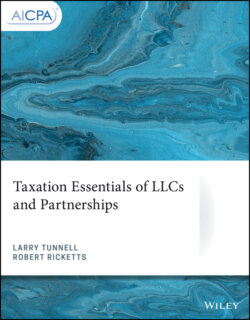Читать книгу Taxation Essentials of LLCs and Partnerships - Larry Tunnell - Страница 23
Example 1-10
ОглавлениеQ and R each own 50% of the shares of Pheasant Ridge, LLC, formed four years ago. Following its formation, the company elected to be taxed as a corporation. Q and R each have tax bases of $120,000 in their LLC interests. The company owns assets with an aggregate tax basis of $250,000 and an aggregate value of $350,000. It has no liabilities. Effective January 1 of the current year, Pheasant Ridge, LLC filed Form 8832 electing to change its status from a corporation to a partnership for federal tax purposes.
Pheasant Ridge will be deemed to liquidate on January 1 of the current year, distributing its assets to Q and R equally. This deemed distribution to Q and R is taxable to Pheasant Ridge as if it had sold its assets for their fair market values and distributed the proceeds to its shareholders. Accordingly, the LLC will recognize a $100,000 gain on the deemed sale and will owe federal income tax of $21,000 on its final income tax return. (The company has no other income in the year of liquidation, as it liquidated on January 1.)
Q and R will also recognize taxable gain on the deemed liquidation. They will be deemed to have received a net distribution of $329,000 ($350,000 FMV of assets, less $21,000 tax liability to the federal government) in exchange for their shares in Pheasant Ridge. Their combined tax basis in these shares is $240,000 ($120,000 each). Therefore, they must recognize a combined gain of $89,000 ($44,500 each). Because they have held their shares for four years, the gain will be taxed as a long-term capital gain, subject to a maximum tax rate of 20%, plus a possible additional 3.8%, depending on the taxable income of the partners. Assuming they have no capital losses and their tax rate on long-term capital gains is 20%, they will each owe $8,900 in additional income taxes on the capital gains. Therefore, the combined tax cost of changing the LLC's federal tax status from a corporation to a partnership will be $38,800 ($21,000 corporate tax, plus $8,900 tax to Q, plus $8,900 tax to R).
The election to change tax status should clearly not be made without full consideration of the potential costs and consequences.
Practical insight: Typically, a practitioner and a taxpayer would not be inclined to incur the federal income tax cost associated with the liquidation of a corporation so that the business form could be switched to a partnership form unless some other significant non-tax business purpose existed.
